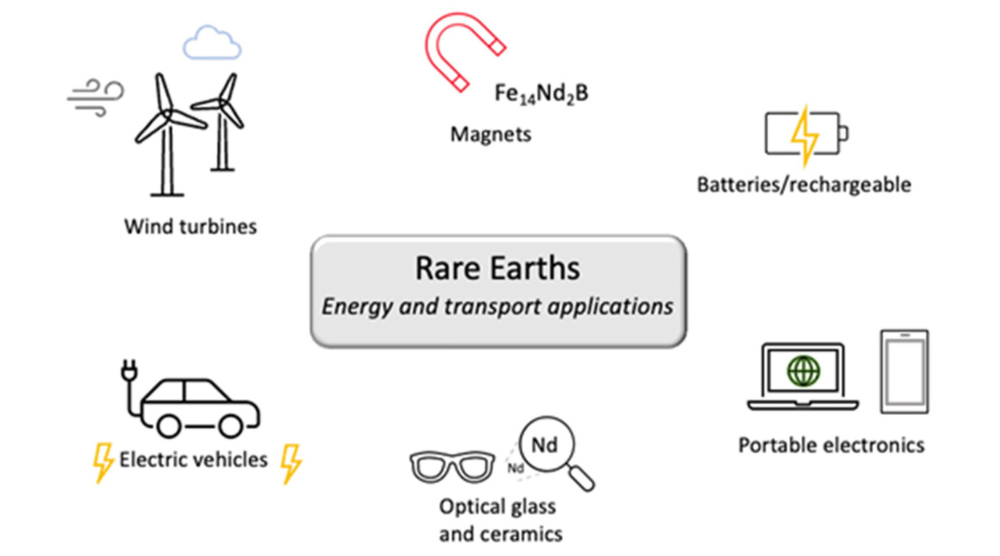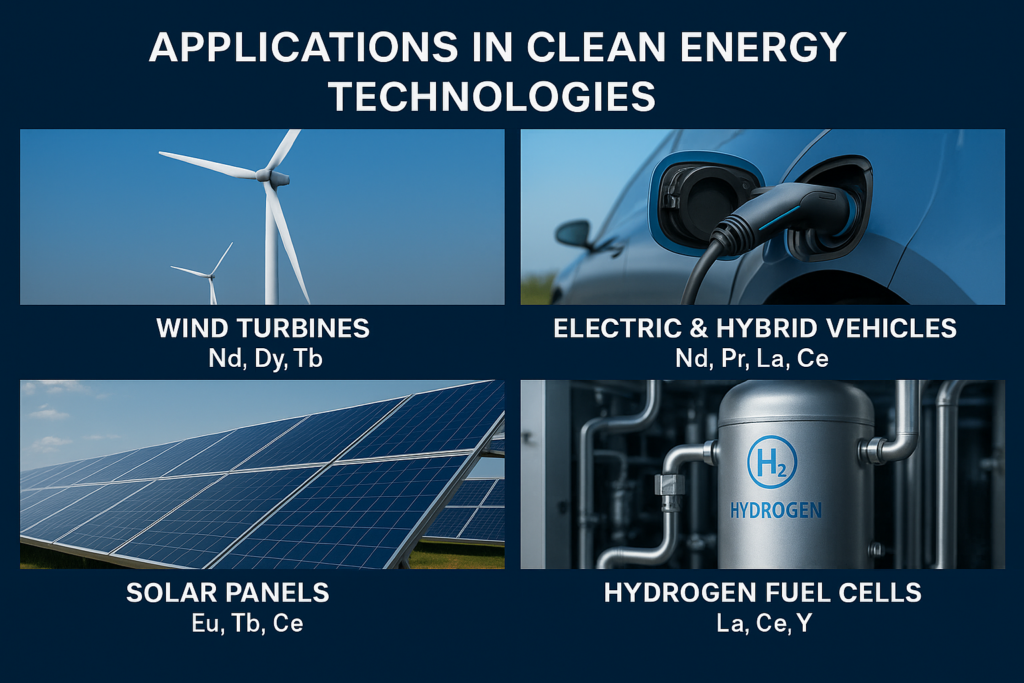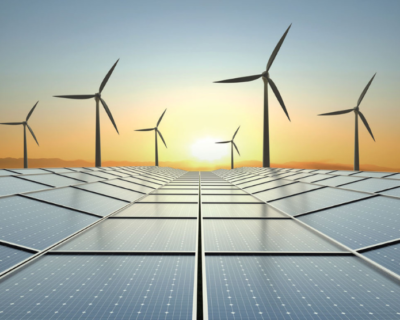Blogs

Rare Earth Elements: The Silent Contributors to Clean Energy | DOMADIA™
Introduction: The Hidden Heroes Behind the Green Revolution
When we think of clean energy, we picture solar panels glistening in the sun, wind turbines slicing through the sky, and sleek electric vehicles gliding silently on the road. But behind this clean, futuristic imagery lies an often-overlooked group of materials — Rare Earth Elements (REEs).
These 17 naturally occurring metallic elements, though not truly “rare,” are the silent contributors that make modern green technology possible. At DOMADIA™, we recognize their indispensable role in shaping a sustainable, energy-efficient world.
What Are Rare Earth Elements?
Rare Earth Elements are a group of 17 metallic elements that include the 15 lanthanides, plus scandium and yttrium. Despite their name, they are relatively abundant in the Earth’s crust — just not often found in concentrated, easily minable forms.
List of Key Rare Earth Elements:
- Light REEs: Lanthanum (La), Cerium (Ce), Praseodymium (Pr), Neodymium (Nd), Samarium (Sm)
- Heavy REEs: Europium (Eu), Gadolinium (Gd), Terbium (Tb), Dysprosium (Dy), Holmium (Ho), Erbium (Er), Thulium (Tm), Ytterbium (Yb), Lutetium (Lu), Yttrium (Y), Scandium (Sc)
Each of these plays a unique role in enabling technologies critical to clean energy — from magnets and batteries to phosphors and catalysts.
Chemical Composition & Properties
Chemically, Rare Earth Elements are electropositive metals with similar properties, making them difficult to separate. They typically form trivalent cations (RE³⁺) and readily bond with oxygen, carbon, and sulphur.
Key Properties:
| Property | Description |
| Atomic Numbers | 21 (Sc) to 71 (Lu) |
| Density | 6.7 – 9.8 g/cm³ |
| Melting Point | 800°C – 1650°C |
| Oxidation State | +3 (dominant) |
| Magnetic Behavior | Strongly paramagnetic or ferromagnetic |
| Electrical Conductivity | Good conductors of electricity and heat |
Their magnetic and luminescent characteristics make them ideal for applications requiring precision, efficiency, and high performance.
Applications in Clean Energy Technologies
Rare Earth Elements are the unsung workhorses of the clean energy revolution. Here’s how they power the transition to a greener world:

1. Wind Turbines (Nd, Dy, Tb)
The world’s most efficient wind turbines use neodymium and dysprosium to create high-strength permanent magnets that can withstand high temperatures and maintain performance under stress.
2. Electric & Hybrid Vehicles (Nd, Pr, La, Ce)
From battery electrodes to motor magnets, REEs enhance EV efficiency, reduce weight, and increase driving range — key for mass electrification.
3. Solar Panels (Eu, Tb, Ce)
Rare Earth phosphors improve solar light absorption and conversion efficiency, enabling higher energy yields from each panel.
4. Hydrogen Fuel Cells (La, Ce, Y)
REE-based catalysts improve hydrogen production and storage, supporting clean hydrogen economies.
5. Energy-Efficient Lighting (Eu, Tb, Y)
Compact fluorescent and LED lights depend on rare earth phosphors to produce bright, stable illumination while consuming minimal power.
Global Standards & Sustainable Sourcing
At DOMADIA™, we align with international environmental and quality standards, ensuring responsible sourcing and processing of Rare Earth Elements.
Key Standards Followed:
- ISO 9001: Quality Management Systems
- ISO 14001: Environmental Management
- RoHS Compliance: Restriction of Hazardous Substances
- REACH Regulation: Safe use and recycling of REE materials
DOMADIA™ also emphasizes ethical mining and recycling, recognizing that sustainable supply chains are as vital as the materials themselves.
Technical Specifications (Typical)
| Parameter | Range / Value |
| Purity | ≥ 99.5% – 99.99% |
| Particle Size (powders) | 1 µm – 100 µm |
| Magnetic Coercivity (for NdFeB Magnets) | 12–16 kOe |
| Thermal Stability | Up to 200°C (magnetic applications) |
| Color / Form | Metallic silver, oxides are white/yellow powders |
Shapes & Forms Available at DOMADIA™
DOMADIA™ provides Rare Earth Elements in various industrial-grade forms, tailored for specific applications:
- Powders & Oxides – for catalysts, phosphors, and coatings
- Alloys & Magnets – for motors and generators
- Pellets & Granules – for metallurgical processes
- Sheets, Rods & Ingots – for research and specialized manufacturing
Environmental Benefits
Using REEs in clean energy systems reduces carbon emissions, improves energy conversion efficiency, and enables technologies that replace fossil fuels.
While extraction poses environmental challenges, advanced recycling and reprocessing technologies — such as those supported by DOMADIA™ — minimize waste and promote circular sustainability.
The Future: Rare Earths and Green Innovation
As the world races toward net-zero emissions, demand for REEs will skyrocket — especially for electric vehicles, wind power, and energy storage. DOMADIA™ is committed to ensuring supply stability and advancing new processing methods that make these critical materials cleaner and more accessible.
Conclusion
Rare Earth Elements may not make headlines like solar panels or EV batteries, but they are the invisible threads holding the clean energy fabric together. At DOMADIA™, we see them not just as resources — but as catalysts for a sustainable future.
Power your innovation with the materials shaping tomorrow.
Partner with DOMADIA™ — your trusted source for high-performance rare earth elements and clean energy materials.
👉 Explore our full range of sustainable metal solutions today.
🔗 Learn more about how DOMADIA™ supports the clean energy ecosystem with advanced Rare Earth solutions.
Talk to us: Kairav Domadia | Aadil Domadia | Er.Pankaj Domadia | Pragati Sanap | Pooja N N
#RareEarthElements #CleanEnergy #DOMADIA #Sustainability #GreenTechnology #RenewableEnergy #WindTurbines #EVs #FutureMaterials #EcoInnovation #NetZero

